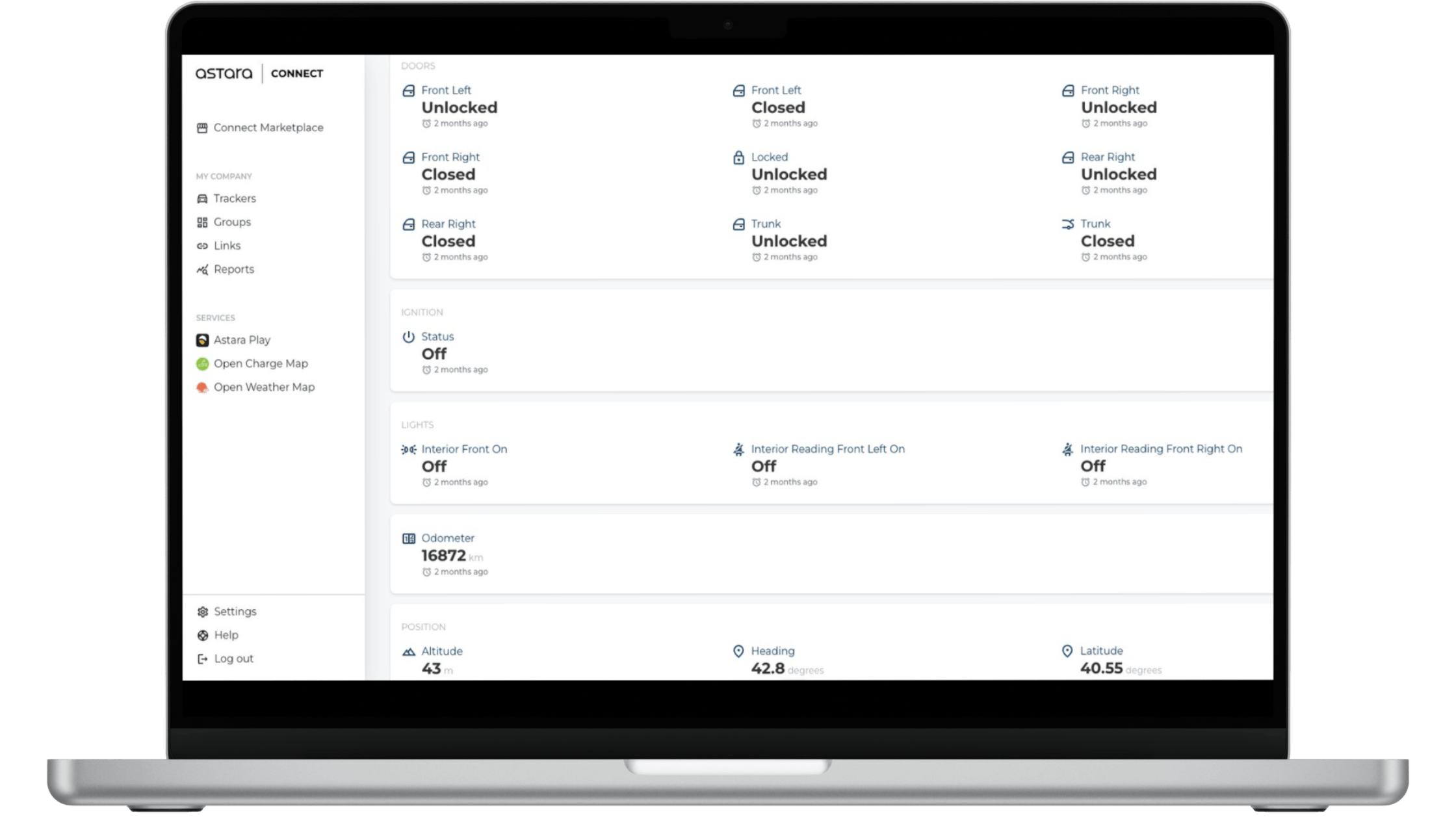The Connected Insurance Revolution, Where Innovation Meets Assurance
Enhance risk assessment, reduce fraud and gain data-driven insights

In the competitive world of insurance companies, the adoption of advanced technologies is essential for evolution and success. Connected mobility, which uses communication and data technologies in vehicles, is revolutionizing fleet management. This technology allows insurers to access real-time data on vehicle performance, driver behavior, and environmental conditions.
By integrating these capabilities, insurers can reduce risks, optimize operations, and improve customer satisfaction, ensuring greater accuracy and speed in decision-making. This technological revolution benefits not only insurance companies but also their customers, providing more efficient and personalized service.
Challenges and Opportunities: The Need to Adapt to Connected Mobility
Insurers face several challenges that can be more effectively addressed through the integration of connected mobility. These challenges include:
- Risk Management: Connected mobility enables the reduction of accident rates and associated costs through constant monitoring and real-time data analysis.
- Premium Optimization: Insurers can offer more accurate and competitive premiums based on actual usage and driver behavior, thanks to the detailed information provided by connected technology.
- Improved Customer Service: Providing faster and more accurate assistance in case of incidents, using vehicle location and telemetry data.
- Regulatory and Environmental Compliance: Ensuring fleets comply with local and international regulations more easily and effectively, through detailed and accurate data collection and solutions that enhance EV adoption.
- Operational Efficiency: Reducing operational costs through constant monitoring and predictive maintenance of vehicles, preventing unexpected breakdowns and optimizing resource use.
The ability to obtain real-time data from fleets allows insurers to respond to these needs more effectively and proactively, transforming the way they manage their operations and services.
Key Data: Vital Information from Connected Vehicles:
Astara Connect enables the capture of a variety of critical vehicle data, essential for evaluating and improving fleet performance. This data includes:
- Telemetry: Real-time information on speed, braking, acceleration, and seat belt usage, helping to assess driver behavior and driving conditions.
- GPS Location: Precise tracking of vehicle location and routes traveled, allowing better planning and response in case of incidents.
- Vehicle Condition: Data on engine status, fuel levels, tire pressure, and other technical aspects, facilitating predictive maintenance and reducing breakdowns.
- Driver Behavior: Analysis of driving style, rest times, and driving in adverse conditions, helping to identify and correct risky driving habits.
- Specific Events: Recording of collisions, sudden braking, rapid acceleration, and directional changes, allowing detailed evaluation of incidents and implementation of corrective measures.

Success Indicators: Essential KPIs for Connected Insurance
Connected mobility provides a series of essential KPIs (Key Performance Indicators) that insurers can use to measure and improve their performance.
- Incident Frequency: Number of accidents or incidents per unit of time or distance traveled, helping to assess and reduce accident rates.
- Driver Behavior Index: Score based on driving style (e.g., sudden accelerations, braking, speeding), allowing identification of high-risk drivers and promotion of safer driving practices.
- Vehicle Downtime: Time vehicles spend out of operation due to maintenance or repairs, which can be reduced through predictive maintenance.
- Cost per Incident: Average cost associated with each recorded incident, enabling evaluation of the effectiveness of risk mitigation strategies.
- Regulatory Compliance Rate: Percentage of vehicles that meet safety and maintenance regulations, ensuring the fleet operates within legal standards.
Competitive Advantages: Products Tailored to Your Customers' Needs
The implementation of Astara Connect provides multiple benefits for both insurers and their customers:
- Premium Reduction: Companies with well-managed fleets and responsible drivers can access lower premiums, incentivizing safe driving behavior.
- Real-Time Assistance: Quick and effective response in emergencies thanks to real-time location and vehicle telemetry, improving customer satisfaction.
- Predictive Maintenance: Decrease in unexpected breakdowns and repair costs through constant monitoring of vehicle condition, ensuring greater availability and operational efficiency.
- Personalized Products: Insurance offers based on actual vehicle usage and driver behavior, such as pay-per-use insurance, better tailored to individual customer needs.
- Better Decision-Making: Accurate and updated data allowing insurers to adjust policies and risk management strategies more effectively, improving profitability and competitiveness.
- Fraud Reduction: Use telemetrics data to verify accident details, and identify consistent driving patterns that might indicate fraudulent activity.
- Scalability and Innovation: collaborate with automotive manufacturers, telematics providers and other stakeholders to offer comprehensive solutions.
- Enhanced Safety and Prevention: Provide insights and tips to your customers to encourage safer driving behaviors.
The adoption of a connected mobility platform for fleet management represents a significant opportunity for insurers. This technology not only enhances risk management and optimizes operations but also offers more personalized and efficient products and services.
Connected mobility is an essential tool for growth and ongoing success in the insurance sector, paving the way for a more innovative and competitive future. The adoption of this technology not only positions insurers at the forefront of the industry but also significantly improves customer experience and satisfaction, creating a safer and more efficient ecosystem for all.
